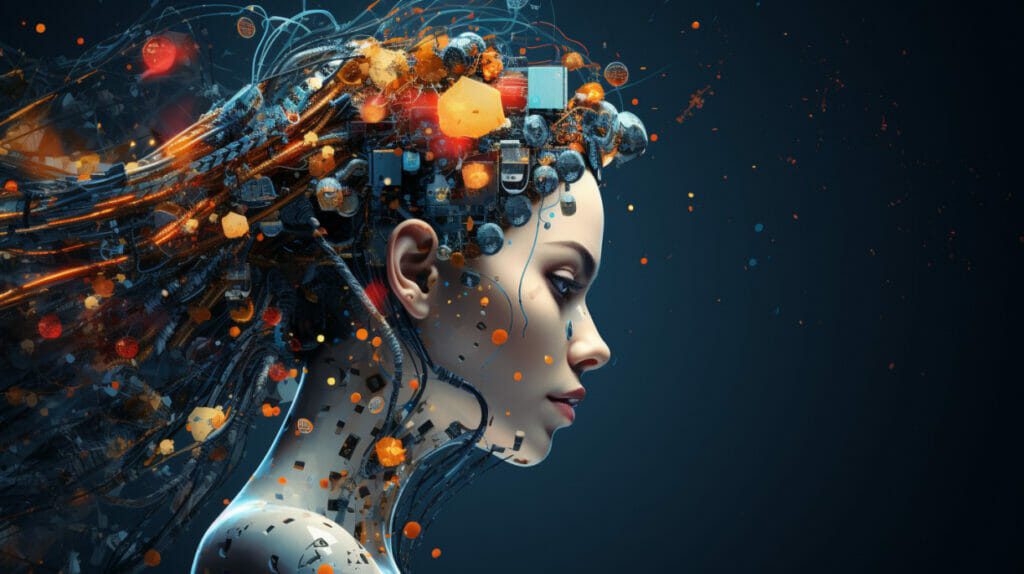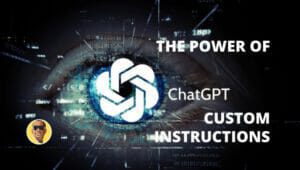Introduction
The realm of conversational AI is experiencing a seismic shift, with the advent of ground-breaking models such as ChatGPT and Claude 2. These innovative AI models have sparked a revolution in the sphere of human-computer interaction, each boasting its unique set of strengths and capabilities that set them apart in the rapidly evolving landscape of AI technology.
ChatGPT, with its human-like conversational abilities, has been a game-changer, captivating the world with its prowess. On the other hand, Claude 2, a new entrant in the field, is making waves with its unique offerings. This dynamic AI model is not just another addition to the AI landscape but is carving out its niche, bringing to the table its unique strengths that are reshaping the way we perceive AI.
The rapid evolution of the AI landscape is fascinating, and Claude 2 is a testament to this constant evolution. This emerging contender is not just keeping up with the pace but is setting new benchmarks in the field. The recent release of the Claude 2 API presented an opportunity to delve deeper into its capabilities and understand how it measures up against established models like ChatGPT.
After spending several hours experimenting with the Claude 2 API, I’ve been able to gather some valuable insights. These insights provide a comparative perspective on how these two leading language models, ChatGPT and Claude 2, stack up against each other. The comparison is not just about pitting one against the other, but about understanding their unique strengths, their approach to conversational AI, and how they are contributing to the advancement of this technology.
This exploration of ChatGPT and Claude 2 is a journey into the heart of conversational AI, offering a glimpse into the future of this technology. It’s a testament to the remarkable strides we’re making in the field of AI, and a preview of the exciting possibilities that lie ahead.
ChatGPT vs Claude 2: Accuracy and Reliability

Accuracy and reliability are not just important, but crucial factors in determining the effectiveness of a conversational AI. These aspects are the bedrock upon which trust in AI is built. From my hands-on experience and observations, it appears that Claude 2 has a slight advantage over ChatGPT in this arena. Claude 2 seems to tread more carefully when it comes to sticking to facts. It is more transparent and forthcoming in admitting when it doesn’t have the information at hand, which is a commendable trait in an AI model.
On the flip side, ChatGPT sometimes tends to generate responses that sound plausible on the surface but may not be entirely accurate upon closer inspection. This is a potential pitfall that users need to be aware of. This is why I always advise those around me to challenge its responses and ask for source references, especially in critical cases where accuracy is paramount. It’s essential to remember that while AI models like ChatGPT are incredibly advanced, they are not infallible and should not be the sole source of information on critical matters.
However, when it comes to general knowledge, ChatGPT likely holds the upper hand for now. Its vast training data and sophisticated algorithms allow it to cover a wide range of topics, making it a versatile tool for general inquiries.

Safety Considerations in ChatGPT and Claude 2
Safety is another critical aspect that cannot be overlooked when evaluating these AI models. In an era where digital interactions are becoming increasingly prevalent, ensuring safe interactions with AI models is of paramount importance. Both ChatGPT and Claude 2 have built-in precautions to ensure safe interactions, which is a testament to the efforts being made to make AI interactions safer.
However, from what I’ve observed, Claude 2’s safety practices seem to be more robust at this stage. This could be attributed to its cautious approach to information dissemination and its transparency in admitting when it doesn’t have the required information.
It’s worth noting that OpenAI, the organization behind ChatGPT, is actively working on improving its model’s limitations. This is a challenge that is not unique to ChatGPT but is also faced by other large language models like Google’s Bard. As these models move towards AGI (Artificial General Intelligence), ensuring trust and confidence in their capabilities and safety measures is a key focus area. The journey towards AGI is fraught with challenges, but with each step, we are moving closer to a future where AI models are not just intelligent but also safe and reliable.
Specialized Knowledge in Conversational AI: ChatGPT vs Claude 2
Conversational Patterns in AI: A Comparison

When it comes to specialized knowledge, the training methodology employed by Claude 2 seems to give it a distinct advantage in certain domains like law and medicine. This is particularly noticeable in the context of basic challenges I’ve established for the US and Canadian contexts. Claude 2’s approach to learning and its ability to delve deeper into these specialized fields could potentially make it a valuable tool for professionals in these areas, providing them with AI assistance that understands the nuances of their field.
However, it’s important to note that specialized knowledge is just one aspect of a conversational AI’s capabilities. When it comes to covering a broader range of fields at a basic level, ChatGPT likely holds the upper hand. Its vast training data, which spans a wide array of topics, makes it a more versatile tool for general inquiries. Whether you’re asking about historical events, scientific concepts, or pop culture trivia, ChatGPT is likely to have some information to offer.
Conversational Patterns: Human-like or Formulaic? A Closer Look

In terms of conversational patterns, there’s a noticeable difference between ChatGPT and Claude 2. ChatGPT’s responses, while informative and coherent, can sometimes feel a bit formulaic. This isn’t necessarily a drawback, as it can lead to consistency in the AI’s responses. However, for users seeking a more human-like interaction, this could be a point of consideration.
On the other hand, Claude 2 seems to exhibit more human-like conversational patterns. This could potentially make interactions with Claude 2 feel more natural and engaging, akin to conversing with another human being. This is an impressive feat for an AI model and speaks volumes about the advancements in natural language processing.
However, it’s important to note that both models have made significant strides in natural language use compared to previous AI models. The progress in this field has been remarkable, and both ChatGPT and Claude 2 are testament to that. As an interesting experiment, I plan to challenge each model to read each other’s output and then rate and amend it. This could provide further insights into their conversational abilities and how they interpret and respond to the same input. This experiment could shed light on the nuances of each model’s conversational patterns and their approach to generating responses.
Conclusion: The Road Ahead
In summary, Claude 2 looks very promising, especially for accuracy and safety-critical applications. However, ChatGPT still seems to be ahead in terms of general knowledge breadth. Both models represent impressive innovations that provide a glimpse into the future of conversational AI. However, as with any technology, there’s always room for improvement and advancement. As we continue to explore and understand these models, it’s clear that the journey of conversational AI is just beginning.
I invite you to join me in this exploration of conversational AI. Do you have any experiences with ChatGPT or Claude 2 that you’d like to share? Or perhaps you have some thoughts on the future of conversational AI? I’d love to hear your thoughts. Feel free to leave a comment below or check out my other posts on www.glenegrant/blogs for more discussions on AI and technology, and why not check out my discussion Exploring AI Safety
External Links







